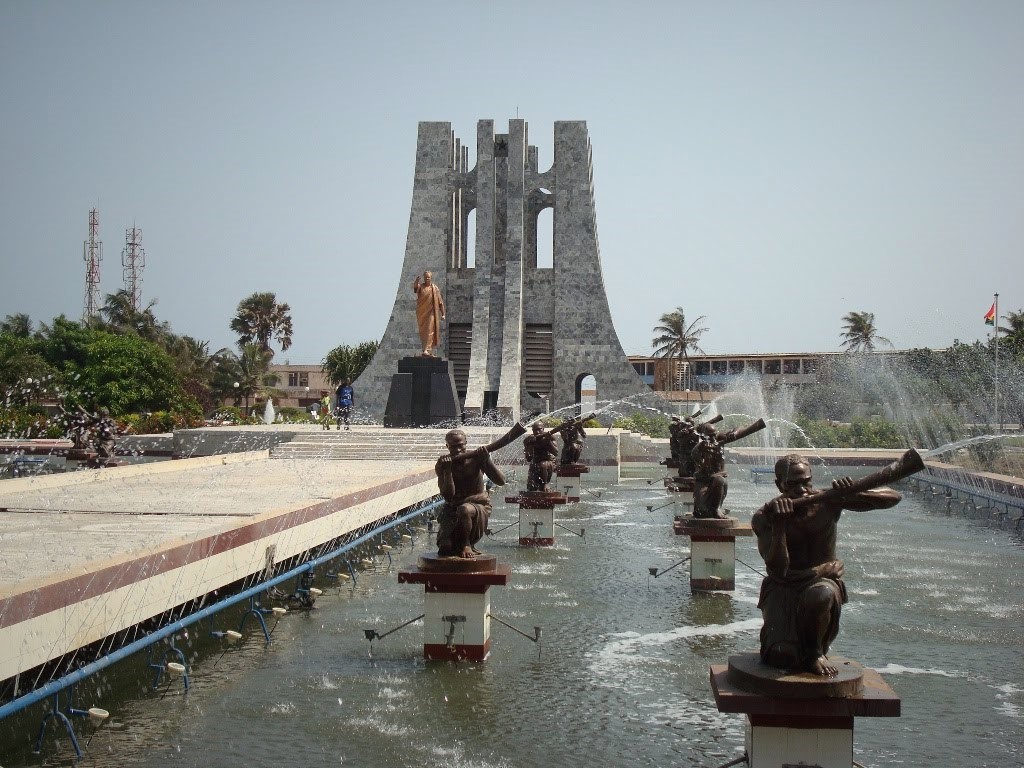The Kwame Nkrumah Mausoleum, located in Accra Ghana, is the final resting place of Ghana’s first President and Africanist, who led a team of great minds to gain the nation’s independence from colonial rule.
With a total surface area of approximately 5.3 acres, the idea of erecting a monument in honour of Kwame Nkrumah dates back to 1972, when the African Students Union sent a memorandum asking the Government of Guinea,under President Sekou Toure, where Kwame Nkrumah died and was buried, to send the mortal remains to Ghana.
Although the remains were later returned to Nkroful, his birthplace, it was not until 1992, that the image of Nkrumah was restored on the Old Polo Grounds during which the Provisional National Defence Council (PNDC), decided to build the mausoleum.
According to many beliefs, he accumulated a couple of enemies during his fight for the independence of Ghana, as well as his autocratic rule which led to his untimely death.
His popular saying of which he is always reminded of, “Ghana our beloved country is free forever”, was said on the very grounds his remains are kept. When the representatives of Queen Elizabeth and Lord Listowel, the then Governor General, Kwame Nkrumah and others gathered in the Old Parliament House to formally mark the country’s independence, the Old Polo Grounds, now the Kwame Nkrumah Mausoleum accommodated a huge crowd of people who had gathered in Accra to participate in the historic activity.
The mausoleum was designed by Don Arthur to show rhythm, contrast and harmony as the main principles of design used in this building, as well as, housing the mortal remains of Dr. Kwame Nkrumah and his wife Fathia Nkrumah, is meant to represent an upside-down sword which in the Akan culture is a symbol of peace.
The mausoleum is beautifully clad from top to bottom with Italian marble, with a black star at its apex to symbolize unity, as indicated in the nation’s flag as well.
The Mausoleum is surrounded by water which depicts the symbol of life. Its presence conveys a sense of immortality for the name Nkrumah. It shows that even in death he lives on in the hearts and minds of generations here and generations yet to come.
The erected monument for this great leader is divided into two parts. The mausoleum which provides a space for the statue of Nkrumah and the museum, which holds the personal belongings of Nkrumah. These include books he wrote, photograph archives and official photographs.
The photo collection features pictures of Nkrumah with several renowned leaders of his time. Some of them are; Pope Pius XII, Queen Elizabeth II and President John Kennedy of the United States, among others.
Aside these, is the metal coffin donated by the people of Guinea when the remains of Nkrumah were returned from Romania to Guinea and later to Nkroful.
Ironically, a bronze statue of Nkrumah clad in cloth with his hand symbolically pointing forward, stands at the same place that Nkrumah stood to declare Ghana’s Independence from British colonial rule on March 6, 1957.
While others view the structure as a resemblance to swords which have been turned upside down, signifying peace, others also view it as an uprooted tree, signifying the unfinished works of Nkrumah, of which subsequent leaders of Ghana have the mandate to continue.
‘ I am not African because I was born in Africa, but because, Africa was born in me’. – Osagyefo Doctor Kwame Nkrumah.
REFERENCE
1. Retrieved from, https://visitghana.com/attractions/kwame-nkrumah-memorial-park/


